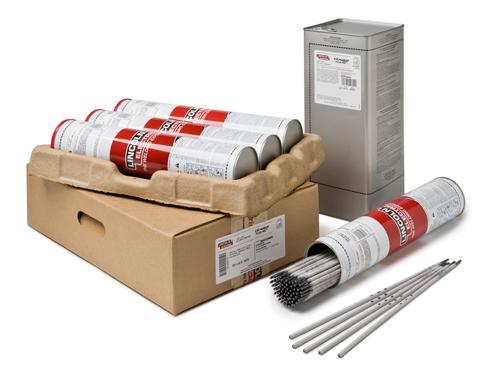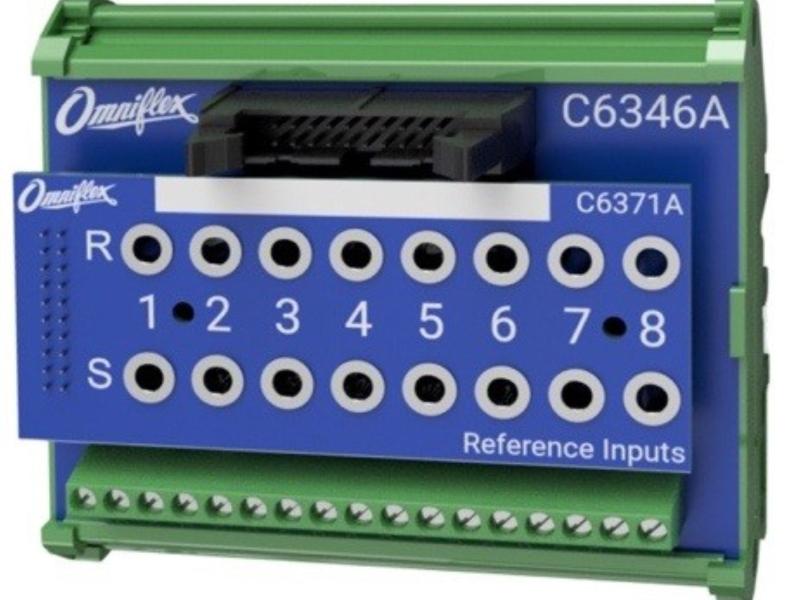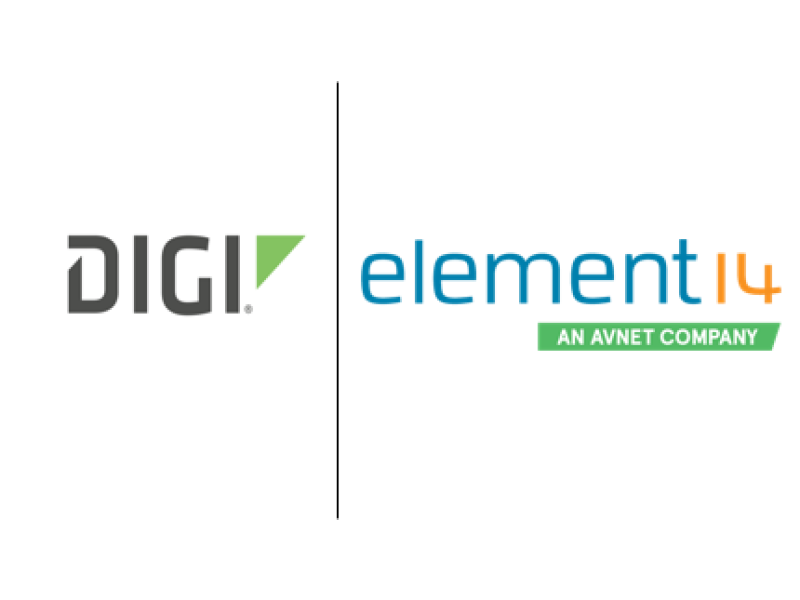The steady development of new alloys over the years has shaped the design and specification of arc welding stick electrodes, which were first used in shipbuilding during World War I. As increasingly demanding welding applications became standard operating procedure in fab shops and in the field, the need for durable, low hydrogen stick electrodes became more prevalent across a variety of industries involved in welding.
As a result, low hydrogen stick electrodes emerged in the marketplace. These versatile consumables have become a primary electrode for a variety of welding applications and have gained wide acceptance in the industry. They are ideal for use in other applications where base metals have a tendency to crack, where thick sections are to be welded or where the base metal has an alloy content higher than that of mild steel, such as high carbon and low alloy steels.
Stick electrodes feature a conductive core wire that in many cases is steel. This wire conducts electrical current from the electrode holder to the work. It also melts to become the filler metal. During the manufacturing process, the chemical coating that forms the flux layer is extruded onto the steel core wire. The electrodes are then baked in a controlled oven to achieve optimum moisture content so the flux can perform its primary task – vaporizing to form a shielding gas and slag system that protects the weld puddle from nitrogen, hydrogen and oxygen. The electrode coating also can provide alloy and properties to the weld deposit.
Today, there are many types of low hydrogen electrodes available for use in shielded metal arc welding (SMAW) applications. These electrodes, which include EXX15, EXX16, EXX18, EXX18-X, EXX28 and EXX48, often are specified to reduce the likelihood of hydrogen-related cracking during the stick welding process.
Low hydrogen electrodes are recommended for three broad areas of application:
• On steels with poor weldability: low alloy, high carbon, high sulphur, or other steels where cracking can be a problem
• When specified by governing codes
• For high-deposition, out-of-position welds on heavy plate
Electrode Properties
Low hydrogen electrodes offer fast-fill (high-deposition) or fill-freeze (out-of-position) characteristics and are designed to produce sound welds of X-ray quality with excellent notch/impact properties and high ductility.
Some low hydrogen stick electrodes have a -1 suffix in the AWS classification. This suffix indicates that the stick electrode meets the requirements for improved toughness.
Welding consumables can be classified with an optional diffusible hydrogen designator. These designators include an H4, H8 and H16 designation. The “H” and corresponding number indicates millilitres of diffusible hydrogen per 100 grams of weld metal. For example, a designation of H4 indicates 4mL of diffusible hydrogen per 100 grams of weld deposit.
The “R” designation for an electrode indicates that it has a moisture-resistant coating. To qualify for an “R” designation, electrodes that have been removed from freshly opened packages or have been reconditioned are exposed to 80 percent relative humidity and a temperature of 80°F for 9 hours. Moisture content after this exposure cannot be more than 0.4 weight percent. Even a small amount of moisture over this level can cause weld porosity and other defects.
While low hydrogen electrodes ideally should run on DCEP polarity (especially if the size is 5/32" or less), they also can be used on AC polarity. In fact, some EXX18 electrodes are designed specifically for AC polarity, such as Excalibur® 7018 AC stick electrode from Lincoln Electric.
Low Hydrogen Workhorse
Low hydrogen electrodes, incidentally, are the most widely used class of welding consumables for such applications as power generation, general fabrication, shipbuilding, hard-to-weld, out-of-position and pipeline (ASME vertical up) welding.
The popular E7018 electrode, for example, has certain characteristics that separate it from other classes. An ideal choice for all position welding, with the exception of vertical down, these low hydrogen electrodes have a high iron powder content that facilitates a smoother, quieter arc with very low spatter, medium arc penetration and high deposition rates. The E7018 electrode exhibits moderately heavy slag is easy to remove.
This class of stick electrode also is ideal for use in joints involving high-strength, high carbon or low alloy steels. The E7018 electrode’s wide versatility makes it a workhorse for many SMAW applications.
Techniques and Troubleshooting
Success in achieving X-ray quality welds using E7018 low hydrogen electrodes, or any low hydrogen electrode, in the SMAW process comes down to technique. Porosity and cracking are the most prevalent of these defects.
The first thing you want to do when starting a weld is to hold a very short arc because the longer the arc length, the higher the possibility of arc-start porosity. Avoid creating a gap between the electrode and the work piece and instead keep a small distance between them. Pulling a long arc means you are moving too far away from your work, potentially causing issues with the slag, and resulting in mechanical defects.
Long arcs are the most common culprits for causing porosity issues with low hydrogen SMAW welding. Most people have the tendency to touch the plate, pull back on the electrode and go back into the plate. When you long arc an electrode, the actual voltage value goes up, making the arc hotter and creating a gap between the welding puddle and the electrode. You cannot count on slag protecting the area when you pull too far out of the joint. This leaves a gap in the shielding gas, which can cause the material to prematurely melt without slag.
As you’re welding, be sure to set the welding power source in the correct amperage range. The electrode’s flux is designed to do a few important things, including protecting the weld. But, if you run at too high of an amperage, you will prematurely destroy the coating and cause defects in the weld. Also, don’t set the hot start control too high (setting on machine); it can generate a long arc and prematurely melt the electrode’s coating, creating insufficient shielding and, ultimately, porosity in the weld.
A useful note to keep in mind: Lincoln Electric’s rule of thumb for low hydrogen amperage range, every thousandth is an amp, e.g., ¼" = .25 = 250 amps, ⅛" = .125 = 125 amps.)
Next, don’t whip the electrode out of the puddle. While there are electrodes that you can manipulate, low hydrogen electrodes perform better when you maintain a drag at, preferably, a 5 to 10 degree angle, slightly up in the same travel direction. Be sure to aim it up from the puddle. Too much of a drag angle will cause your weld to fingernail – a phenomenon when the electrode coating burns off unevenly, leaving a large piece of heavy coating behind on the weld.
When welding the second pass, use a weaving motion or stringer technique. If you opt to weave, think of the number 8 sideways and move from left to right. Also, pay close attention to the bead width when using the weaving technique. Try to keep it at ¾" or smaller for the maximum width overall after multiple passes. For the stringer motion, create the letter “I” and follow in a straight motion.
Another important thing to keep in mind is the fact that electrodes last only so long. You will get only so many inches of weld with a single electrode before you need to restart your work with a new one. Be aware that restarting can cause a variety of problems if not done with care.
One of the most common issues occurring with restarting is that the welder gets too much of an upward rod angle and creates fingernailing or a long arc situation. Many people start too high and drag it above the crater. To avoid these scenarios when restarting an electrode, start about ¼" to ½" above your work or the previous weld.
Think of it this way: if you had an 8" plate and weld 3", many people would try to strike the arc at the top and drag down to where the weld ends. Instead, start no more than ¼" to ½" above the crater to keep the joint as clean as possible. You want to angle the electrode directly into the joint at no more than 5 or 10 degrees.
Sometimes, you might not have burned up the entire rod and want to restart with that same electrode at another time. It’s likely, however, that the electrode’s tip has hardened, leaving the covering brittle and tough. If you’re like most people, you’re going to want to put the electrode in a holder and bang it on the plate like a hammer. Don’t, because it can chip the electrode’s coating, affect slag production and cause the weld to go off centre and crack.
Instead, disconnect the electrode from the stinger and roughly rub it on the surface of the welding table. Do not bang it. Scratch it to get the core wire to show so you can make a good connection and have proper conditions for good arc shielding.
Additionally, proper storage of low hydrogen electrodes is critical once the container has been opened to prevent moisture pick up. Low hydrogen electrodes can be re-dried if proper care and technique is used. Please consult the electrode manufacturer for their recommendations.
In short, proper training in SMAW techniques is crucial for achieving good results, particularly when work involves low hydrogen electrodes. Understanding how these electrodes function and exploring the techniques required to deliver X-ray quality welds will pay big dividends in better weld quality and fewer porosity defects.
by Joseph Kolasa, Lincoln Electric Welding School Instructor and Joseph Murlin, SMAW consumable product manager, The Lincoln Electric Company






